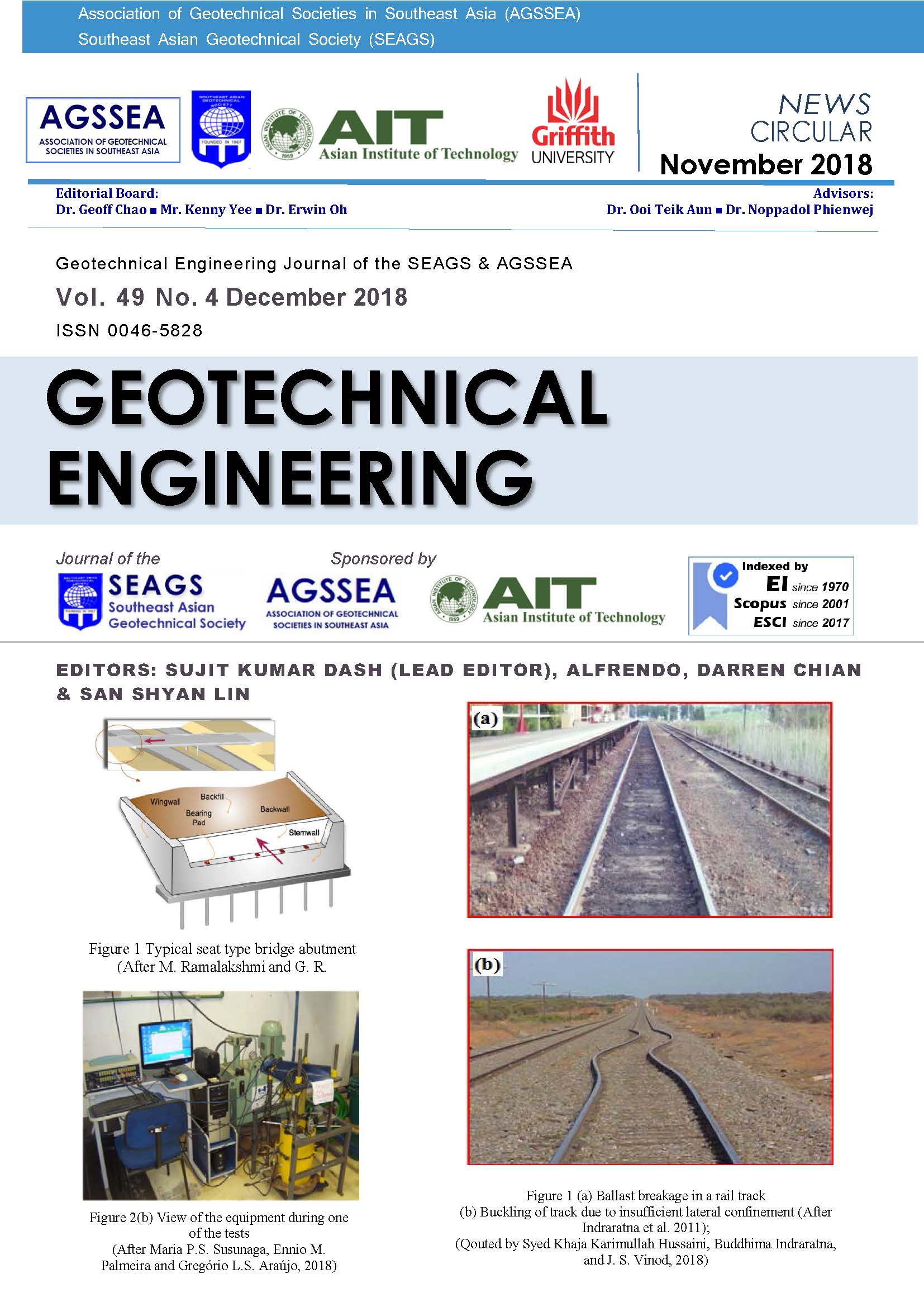Probabilistic Stability Analyses of Reinforced Slope Subjected to Strip Loading
Main Article Content
Abstract
The aim of the present study is to investigate the effect of uncertainty associated with soil friction angle (ϕ) and soil unit weight (γ) on the stability of both unreinforced and reinforced cohesionless soil slopes subjected to strip loading. The magnitude of CoV of ϕ and γ are varied to account uncertainties. The location of the footing on the top of the slope is also changed. Stability of both unreinforced and reinforced slopes is presented in terms of factor of safety (FoS). Deterministic FoS values are computed first by using a two-dimensional finite difference software FLAC. To perform probabilistic analyses, FLAC is combined with Monte Carlo simulations. The outcomes of the probabilistic analyses are presented in terms of probability of failure (pF) and reliability index (β). The value of β obtained from the present study is compared with the guidelines provided by USACE. It is found out that with the increase in the value of CoV, pF increases and β decreases. As expected, the failure probability of slope is found to be maximum, when footing is placed on the edge of the unreinforced slope. With the inclusion of a single layer of geotextile in the slope for the same footing position, pF reduces drastically, and β increases significantly. As footing position shifts from the slope edge, pF increases for a particular CoV value of ϕ and γ. The effect of uncertainty related to ϕ is found to be more prominent with compared to the uncertainty related to γ. The influence of cross-correlation between ϕ and γ is also studied. It is found that there is no significant change in the value of pF with the change in the value of cross correlation coefficient...
Article Details

This work is licensed under a Creative Commons Attribution-NonCommercial-NoDerivatives 4.0 International License.
Copyright © 2019 Association of Geotechnical Societies in Southeast Asia (AGSSEA) - Southeast Asian Geotechnical Society (SEAGS).


